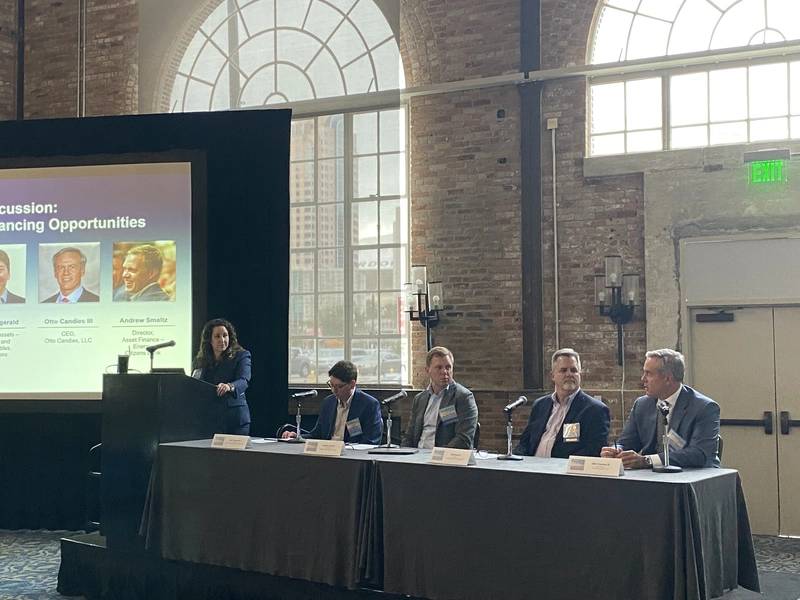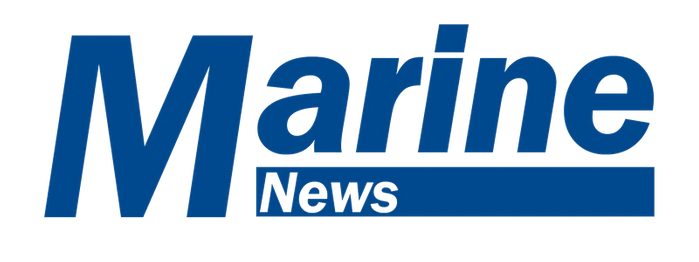Vessels
Vessel Conversions Gaining Favor in US Offshore Wind
A difficult financial environment for newbuilds is leading U.S. offshore wind stakeholders to consider repurposing existing Jones Act vessels from offshore oil and gas.
By Eric Haun
With the creation of a full-fledged U.S. offshore wind industry undoubtedly comes many opportunities for those that own, operate, build and service relevant vessels as developers work toward the nation’s goal of 30 gigawatts (GW) of offshore wind by 2030.
But for every opportunity there are at least a handful of challenges, many of which have recently been amplified by supply chain volatility, inflation pressures and other unwelcome factors that have spurred cost increases for everything from steel to manpower.
While demand for vessels is growing in parallel with the pipeline of offshore wind projects due to move forward, one of the biggest challenges is securing the financing to build them, a group of panelists said at the American Bureau of Shipping’s (ABS) Offshore Wind Forum in New Orleans in December. In such a fluid, tightening situation, crunching the numbers has become all the more difficult.
“Vessel financing discussions have definitely slowed in the last eight months,” said Andrew Smaltz, director of asset finance for energy, rail, marine, real estate and equipment at Citizens Commercial Banking. Part of the problem, he said, stems from rising interest rates. “Today, in a bank market, you're looking at something around 7% to 8% in your financing of a vessel, which is something we haven't thought about in probably 20 years.”
Government-sponsored loans with lower rates just below 5% are looking “very attractive”, Smaltz said, though he noted that the underwriting period is long—6 to 9 months for a MARAD loan. “The question becomes, ‘How do we bridge that gap from today when you want to sign up for a contract and put your bid out there to tomorrow where you actually need that takeout financing? And oh, by the way, is it a guarantee?’”
Smaltz said for an asset such as a crew transfer vessel (CTV) with a price tag of $10 million to $15 million, “companies can finance that on their balance sheet, use bank money, and then they can drive that day rate.” The story is much different for a service operations vessel (SOV), which could cost $130 million to $150 million depending on chosen specifications, he explained.

At the American Bureau of Shipping’s (ABS) Offshore Wind Forum in New Orleans, from left to right: Panel moderator Liz Kretovic, ABS director, offshore wind North America; Jack Fitzgerald, an offshore broker at Clarksons Offshore and Renewables; Andrew Smaltz, director of asset finance for energy, rail, marine, real estate and equipment at Citizens Commercial Banking; Jeff Andreini, Crowley’s vice president of wind services; and Otto B. Candies III, Otto Candies CEO and chairman.
Jeff Andreini, Crowley’s vice president of wind services, put this in real terms. “I'm going to be perfectly honest with you, the SOV market is challenging,” he said. Two years ago, Crowley partnered with Danish shipping company ESVAGT to build and operate Jones Act SOVs to support the U.S. offshore wind market. “I thought we had a great opportunity, and I still do, but I have to be perfectly frank and say if I would've known then what I know today, I'm not sure that we would've made that investment. I'm not they would have made that investment. The capital that goes into that is too high and the returns are too low.”
It will take some “outside the box thinking” to find solutions that work and are profitable for all parties involved, Andreini suggested. Among ideas listed was sharing vessels between windfarms, which would help drive down costs, including day rates, and provide larger, longer-term workloads that would justify newbuild expenditure.
Another option being considered while financial challenges continue to keep newbuild activity at bay is the conversion of existing offshore oil and gas vessels from the U.S. Gulf of Mexico to service America’s new offshore wind industry. For example, Andreini said Crowley owns a fleet of 400-foot deck barges that it had originally built for oil and gas that it could use for feedering operations during windfarm construction.
Smaltz agreed that conversions could be attractive from a financial standpoint. “The retrofit market is certainly something that is taking shape today but is probably very viable,” he said. “If you came to a bank with a five-year contract on a retrofit vessel, a bank actually might step out and finance the retrofitting of that vessel, take security of the vessel and then take a five-year contract because the vessel has largely been depreciated at that point. The risk is a lot less, and frankly the amortization term that that company's going to be looking for is a lot less. On a newbuild vessel, operators are generally looking for 15-year amortization schedules. They would love a 20-year amortization schedule.”
Of course, the retrofit market shares some of the challenges faced in the newbuild space, including supply chain issues and shipyard delays that would hinder required upgrade programs, said Jack Fitzgerald, an offshore broker at Clarksons Offshore and Renewables. It also has its own set of difficulties, such as finding vessels fit for purpose and capable of handling weather in the U.S. Northeast, as well as the innumerable variables associated with resurrecting an aging fleet laid up in the Gulf, he added.
But one firm already working to put converted Jones Act vessels to work in U.S. offshore wind is Otto Candies, considered a leader and pioneer in the offshore oil and gas business. “The world tends to underestimate the quality of the equipment that we build in United States,” said Otto B. Candies III, the company’s CEO and chairman. “We have equipment and designs that are coming from all over the world; we're using all the most technologically advanced design concepts and equipment.”
“We were able to go in and convince Siemens Gamesa with the Paul Candies and to convince GE Renewable Energy with the Kay Candies that these types of assets could fit their needs,” Candies said. “It was really just a matter of presenting a case to show that we had assets already available that with very slight modifications could meet the requirements of the wind market.”
Notably, these two vessels are not stacked; they are currently working to support the oil and gas industry and will be able to switch over to offshore wind relatively easily and without any major conversion work, Candies said, adding that there are other vessels currently serving the inspection, maintenance and repair (IMR) market or the multipurpose support vessel (MPSV) market in Gulf that are suited to work in offshore wind. “You're going to see interrelated markets between oil and gas and wind where the basic hull designs and basic form of the ship are not going to be a whole lot different than what we already see. It is just going to be specific equipment that helps accomplish the jobs that are needed there [for offshore wind] versus what's needed here [for oil and gas] that are really the differences in the vessel design.”
Fitzgerald expects the coming years will see “somewhat of a migration” of vessels, stacked or otherwise, moving from Louisiana and Texas Gulf region to support offshore wind in the Northeast. “We need to start bolstering our vessel supply, whether it's taking vessels out of stack, or through some other methods,” he said.
Fitzgerald pointed to the sheer volume of vessels that will be required to support the burgeoning industry. “During the short term, the next two to three years, we are probably looking at anywhere from 40 to 50 proper U.S. renewable vessels that will be needed for [offshore wind] projects,” Fitzgerald said, noting that the “rough number” could be close to 100 in the longer term as the U.S. makes headway toward installing and serving 30 GW of offshore wind by 2030.
